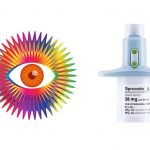Does Fladrafinil Cause Euphoria?

Euphoria, commonly known as “high” is a feeling or state of intense excitement and happiness, it is an amplification of pleasure, a phase where one’s essential biological needs appear to be satisfied.
Euphoria is associated with many classes of addictive drugs and it is linked with the brain reward system. Drugs of abuse have in common the fact that they serve as biological rewards. They do so because of their ability to activate endogenous brain circuitry.
Drugs that cause euphoria activate the brain’s reward center by triggering the release of the brain chemical dopamine which surges, like waves producing a high in the process. After repeated hits, the brain adjusts to this higher level of dopamine by making less of it and by reducing the number of receptors that can receive and transmit the signals it sends.
Having too much dopamine or too much dopamine concentrated in some parts of the brain and not enough in other parts is linked to being more competitive, aggressive, and having poor impulse control. It can lead to conditions that include ADHD, binge eating, addiction, and gambling.
What is Fluorafinil?
Fluorafinil or CRL-40,941, is a nootropic drug related to Adrafinil and Modafinil. These Eugeroic substances promote prolonged alertness and wakefulness after administration.
According to scientific references, its chemical structure includes a bis (p-fluoro) ring-substituted derivative of adrafinil with a molar mass of 325.33 g/mol.
The drug was first founded in the 1970s, and a patent was then issued in France. As a matter of fact, because of its potency, it is used by students and a number of other people to improve brain function, memory, and focus.
As a disclaimer, although it has similar effects as Modafinil and Adrafinil capsules, it still has differences. Studies have shown that Fladrafinil poses an anti-aggressive effect on animals and has the ability to increase motivation. Something that the other eugeroics do not have.
How long does Fladrafinil take to work?
Effects of Fladrafinil usually are apparent within 60 minutes when taken orally on an empty stomach.
How is Fladrafinil taken?
Fladrafinil is noted as significantly more powerful than Adrafinil dosage. Hence, a lower dose is recommended to achieve the desired result.
New users should only take 30 to 80 mg dosage of the capsule or powder. The administration should be within 14 to 16 hours daily for more than a week.
Then, you can increase the dose but not exceed more than 200 mg daily combination of doses.
Please be advised that using Fladrafinil might have risks involved if you have other medications or medical conditions.
Can Fladrafinil cause Euphoria?
No, Fladrafinil does not cause euphoria and it is not physically addictive. However, studies have shown that using eugeroic substances like Fladrafinil can result in dependence on the drug or a tolerance, especially among people taking more than the prescribed dosages.
If you suddenly stop using Fladrafinil, you may have withdrawal symptoms (such as shaking, sweating, chills, nausea, vomiting, and confusion). To help prevent withdrawal, your doctor may lower your dose slowly. Withdrawal is more likely if you have used Fladrafinil for a long time or in high doses.
Taking Fladrafinil long-term may increase the risk of developing both psychological and physical dependence.
Potential Side Effects of Fladrafinil
As with any stimulant, there are potential side effects. Studies are lacking in showing potential side effects of Fladrafinil in humans since research remains scant.
Fladrafinil share several similarities with adrafinil as a result you can expect that higher doses of Fladrafinil may result in orofacial dyskinesia when used long-term.
Because Fladrafinil metabolizes in the liver, there is some concern about the potential negative effect of Fladrafinil ingestion on liver enzymes and liver damage. Again, there is no human evidence behind this because there have not been enough human studies completed to date.
Additionally, as with many nootropics, Fladrafinil could lead to tolerance issues, and many users recommend cycling the drug to maintain effectiveness.
Some of the side effects associated with Fladrafinil and its metabolite include:
- Anxiety
- Chest pain
- Chills
- Diarrhea
- Elevated blood pressure
- Headache
Fladrafinil may cause other side effects. Call your doctor if you have any unusual problems while taking this medication.
If you experience a serious side effect, you or your doctor may send a report to the Food and Drug Administration’s (FDA) MedWatch Adverse Event Reporting program by phone (1-800-332-1088).





